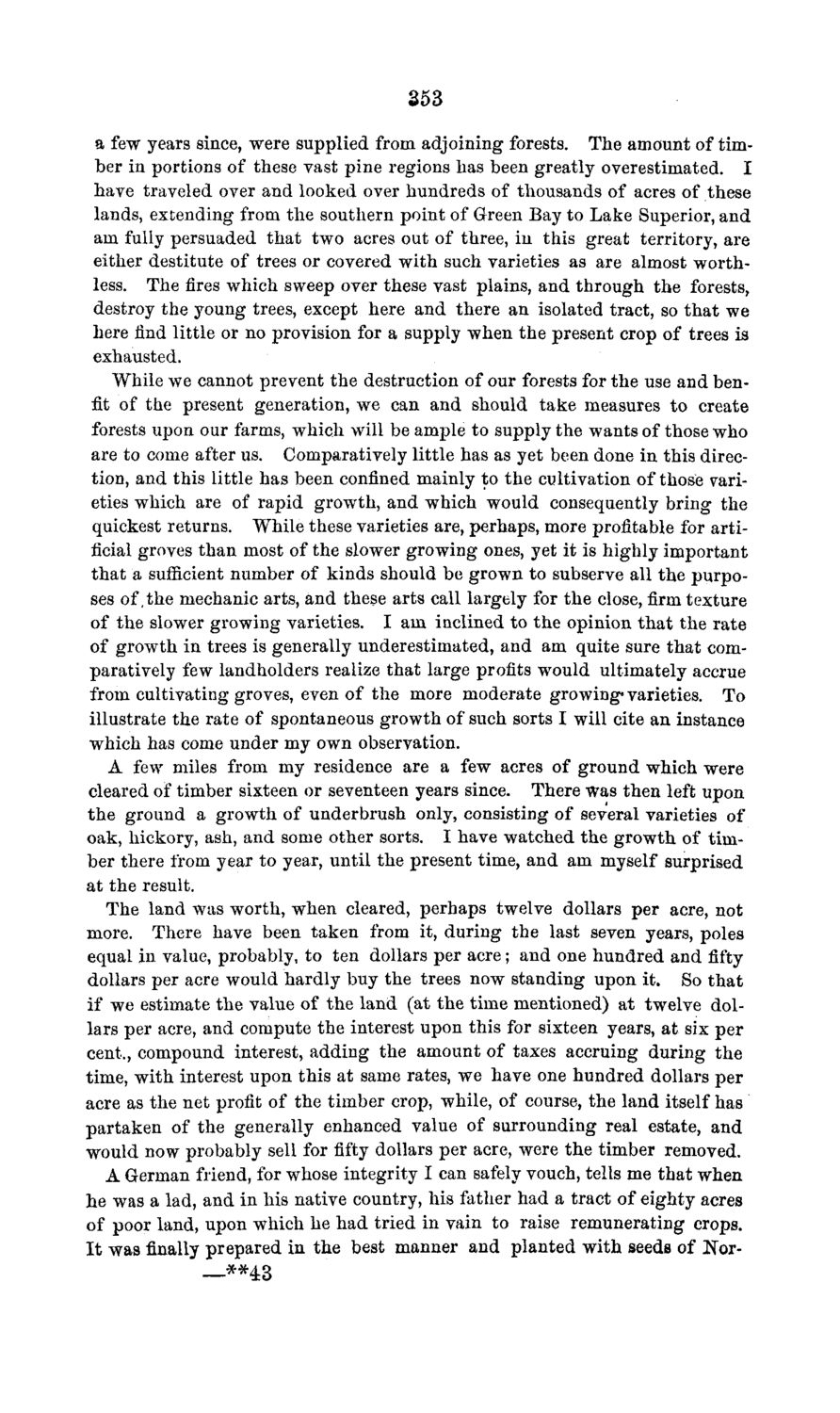| |
| |
Caption: Board of Trustees Minutes - 1869
This is a reduced-resolution page image for fast online browsing.

EXTRACTED TEXT FROM PAGE:
353 a few years since, were supplied from adjoining forests. The amount of timber in portions of these vast pine regions has been greatly overestimated. I have traveled over and looked over hundreds of thousands of acres of these lands, extending from the southern point of Green Bay to Lake Superior, and am fully persuaded that two acres out of three, in this great territory, are either destitute of trees or covered with such varieties as are almost worthless. The fires which sweep over these vast plains, and through the forests, destroy the young trees, except here and there an isolated tract, so that we here find little or no provision for a supply when the present crop of trees is exhausted. While we cannot prevent the destruction of our forests for the use and benfit of the present generation, we can and should take measures to create forests upon our farms, which will be ample to supply the wants of those who are to come after us. Comparatively little has as yet been done in this direction, and this little has been confined mainly to the cultivation of those varieties which are of rapid growth, and which would consequently bring the quickest returns. While these varieties are, perhaps, more profitable for artificial groves than most of the slower growing ones, yet it is highly important that a sufficient number of kinds should be grown to subserve all the purposes of, the mechanic arts, and these arts call largely for the close, firm texture of the slower growing varieties. I am inclined to the opinion that the rate of growth in trees is generally underestimated, and am quite sure that comparatively few landholders realize that large profits would ultimately accrue from cultivating groves, even of the more moderate growing* varieties. To illustrate the rate of spontaneous growth of such sorts I will cite an instance which has come under my own observation. A few miles from my residence are a few acres of ground which were cleared of timber sixteen or seventeen years since. There was then left upon the ground a growth of underbrush only, consisting of several varieties of oak, hickory, ash, and some other sorts. I have watched the growth of timber there from year to year, until the present time, and am myself surprised at the result. The land was worth, when cleared, perhaps twelve dollars per acre, not more. There have been taken from it, during the last seven years, poles equal in value, probably, to ten dollars per acre; and one hundred and fifty dollars per acre would hardly buy the trees now standing upon it. So that if we estimate the value of the land (at the time mentioned) at twelve dollars per acre, and compute the interest upon this for sixteen years, at six per cent., compound interest, adding the amount of taxes accruing during the time, with interest upon this at same rates, we have one hundred dollars per acre as the net profit of the timber crop, while, of course, the land itself has partaken of the generally enhanced value of surrounding real estate, and would now probably sell for fifty dollars per acre, were the timber removed. A German friend, for whose integrity I can safely vouch, tells me that when he was a lad, and in his native country, his father had a tract of eighty acres of poor land, upon which he had tried in vain to raise remunerating crops. It was finally prepared in the best manner and planted with seeds of Kor- —**43
| |